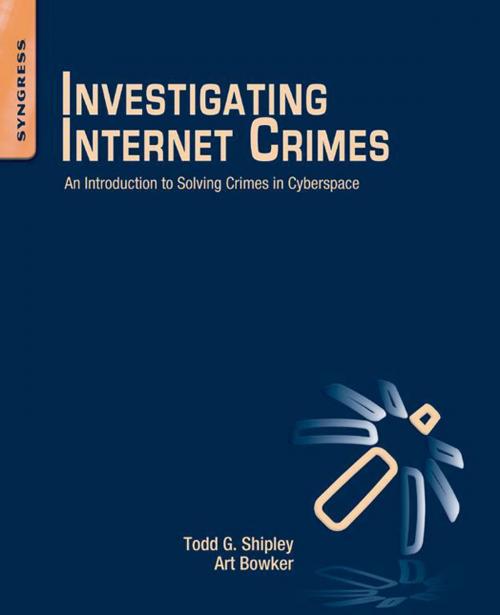Investigating Internet Crimes
An Introduction to Solving Crimes in Cyberspace
Nonfiction, Computers, Networking & Communications, Computer Security, Operating Systems, Application Software| Author: | Todd G. Shipley, Art Bowker | ISBN: | 9780124079298 |
| Publisher: | Elsevier Science | Publication: | November 12, 2013 |
| Imprint: | Syngress | Language: | English |
| Author: | Todd G. Shipley, Art Bowker |
| ISBN: | 9780124079298 |
| Publisher: | Elsevier Science |
| Publication: | November 12, 2013 |
| Imprint: | Syngress |
| Language: | English |
Written by experts on the frontlines, Investigating Internet Crimes provides seasoned and new investigators with the background and tools they need to investigate crime occurring in the online world. This invaluable guide provides step-by-step instructions for investigating Internet crimes, including locating, interpreting, understanding, collecting, and documenting online electronic evidence to benefit investigations.
Cybercrime is the fastest growing area of crime as more criminals seek to exploit the speed, convenience and anonymity that the Internet provides to commit a diverse range of criminal activities. Today's online crime includes attacks against computer data and systems, identity theft, distribution of child pornography, penetration of online financial services, using social networks to commit crimes, and the deployment of viruses, botnets, and email scams such as phishing. Symantec's 2012 Norton Cybercrime Report stated that the world spent an estimated $110 billion to combat cybercrime, an average of nearly $200 per victim.
Law enforcement agencies and corporate security officers around the world with the responsibility for enforcing, investigating and prosecuting cybercrime are overwhelmed, not only by the sheer number of crimes being committed but by a lack of adequate training material. This book provides that fundamental knowledge, including how to properly collect and document online evidence, trace IP addresses, and work undercover.
- Provides step-by-step instructions on how to investigate crimes online
- Covers how new software tools can assist in online investigations
- Discusses how to track down, interpret, and understand online electronic evidence to benefit investigations
- Details guidelines for collecting and documenting online evidence that can be presented in court
Written by experts on the frontlines, Investigating Internet Crimes provides seasoned and new investigators with the background and tools they need to investigate crime occurring in the online world. This invaluable guide provides step-by-step instructions for investigating Internet crimes, including locating, interpreting, understanding, collecting, and documenting online electronic evidence to benefit investigations.
Cybercrime is the fastest growing area of crime as more criminals seek to exploit the speed, convenience and anonymity that the Internet provides to commit a diverse range of criminal activities. Today's online crime includes attacks against computer data and systems, identity theft, distribution of child pornography, penetration of online financial services, using social networks to commit crimes, and the deployment of viruses, botnets, and email scams such as phishing. Symantec's 2012 Norton Cybercrime Report stated that the world spent an estimated $110 billion to combat cybercrime, an average of nearly $200 per victim.
Law enforcement agencies and corporate security officers around the world with the responsibility for enforcing, investigating and prosecuting cybercrime are overwhelmed, not only by the sheer number of crimes being committed but by a lack of adequate training material. This book provides that fundamental knowledge, including how to properly collect and document online evidence, trace IP addresses, and work undercover.
- Provides step-by-step instructions on how to investigate crimes online
- Covers how new software tools can assist in online investigations
- Discusses how to track down, interpret, and understand online electronic evidence to benefit investigations
- Details guidelines for collecting and documenting online evidence that can be presented in court















